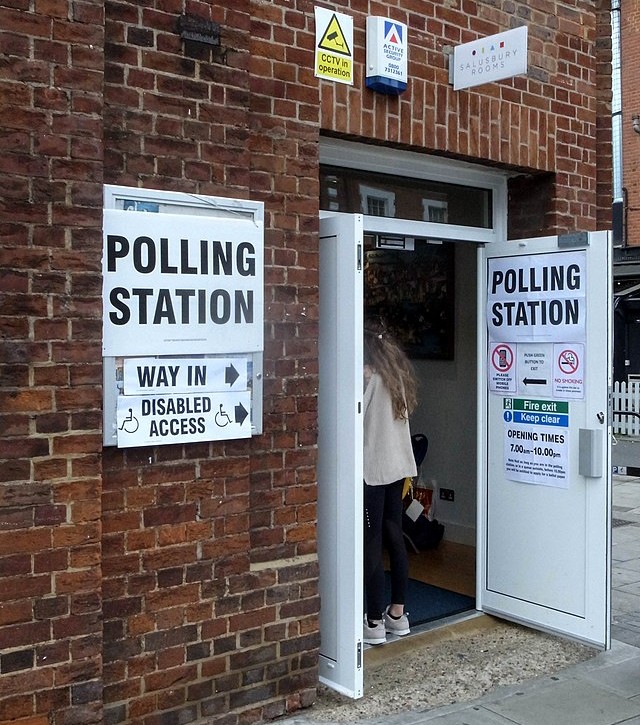There’s no point in saying I told you so when the people you’re saying it to got the result they intended.
At the Guardian, Peter Walker reports the Electoral Commission’s finding that at least 14,000 people were turned away from polling stations in May’s local elections because they didn’t have the right ID as required under the new voter ID law. The Commission thinks that’s a huge underestimate; 4% of people who didn’t vote said it was because of voter ID – which Walker suggests could mean 400,000 were deterred. Three-quarters of those lacked the right documents; the rest opposed the policy. The demographics of this will be studied more closely in a report due in September, but early indications are that the policy disproportionately deterred people with disabilities, people from certain ethnic groups, and people who are unemployed.
The fact that the Conservatives, who brought in this policy, lost big time in those elections doesn’t change its wrongness. But it did lead the MP Jacob Rees-Mogg (Con-North East Somerset) to admit that this was an
***
One of the more obscure sub-industries is the business of supplying ad services to websites. One such little-known company is Criteo, which provides interactive banner ads that are generated based on the user’s browsing history and behavior using a technique known as “behavioral retargeting”. In 2018, Criteo was one of seven companies listed in a complaint Privacy International and noyb filed with three data protection authorities – the UK, Ireland, and France. In 2020, the French data protection authority, CNIL, launched an investigation.
This week, CNIL issued Criteo with a €40 million fine over failings in how it gathers user consent, a ruling noyb calls a major blow to Criteo’s business model.
It’s good to see the legal actions and fines beginning to reach down into adtech’s underbelly. It’s also worth noting that the CNIL was willing to fine a *French* company to this extent. It makes it harder for the US tech giants to claim that the fines they’re attracting are just anti-US protectionism.
***
Also this week, the US Federal Trade Commission announced it’s suing Amazon, claiming the company enrolled millions of US consumers into its Prime subscription service through deceptive design and sabotaged their efforts to cancel.
“Amazon used manipulative, coercive, or deceptive user-interface designs known as “dark patterns” to trick consumers into enrolling in automatically-renewing Prime subscriptions,” the FTC writes.
I’m guessing this is one area where data protection laws have worked, In my UK-based ultra-brief Prime outings to watch the US Open tennis, canceling has taken at most two clicks. I don’t recognize the tortuous process Business Insider documented in 2022.
***
It has long been no secret that the secret behind AI is human labor. In 2019, Mary L. Gray and Siddharth Suri documented this in their book Ghost Work. Platform workers label images and other content, annotate text, and solve CAPTCHAs to help train AI models.
At MIT Technology Review, Rhiannon Williams reports that platform workers are using ChatGPT to speed up their work and earn more. A team of researchers from the Swiss Federal Institute of Technology study (PDF)found that between 33% and 46% of the 44 workers they tested with a request to summarize 16 extracts from medical research papers used AI models to complete the task.
It’s hard not to feel a little gleeful that today’s “AI” is already eating itself via a closed feedback loop. It’s not good news for platform workers, though, because the most likely consequence will be increased monitoring to force them to show their work.
But this is yet another case in which computer people could have learned from their own history. In 2008, researchers at Google published a paper suggesting that Google search data could be used to spot flu outbreaks. Sick people searching for information about their symptoms could provide real-time warnings ten days earlier than the Centers for Disease Control could.
This actually worked, some of the time. However, as early as 2009, Kaiser Fung reported at Harvard Business Review in 2014, Google Flu Trends missed the swine flu pandemic; in 2012, researchers found that it had overestimated the prevalence of flu for 100 out of the previous 108 weeks. More data is not necessarily better, Fung concluded.
In 2013, as David Lazer and Ryan Kennedy reported for Wired in 2015 in discussing their investigation into the failure of this idea, GFT missed by 140% (without explaining what that means). Lazer and Kennedy find that Google’s algorithm was vulnerable to poisoning by unrelated seasonal search terms and search terms that were correlated purely by chance, and failed to take into account changing user behavior as when it introduced autosuggest and added health-related search terms. The “availability” cognitive bias also played a role: when flu is in the news, searches go up whether or not people are sick.
While the parallels aren’t exact, large language modelers could have drawn the lesson that users can poison their models. ChatGPT’s arrival for widespread use will inevitably thin out the proportion of text that is human-written – and taint the well from which LLMs drink. Everyone imagines the next generation’s increased power. But it’s equally possible that the next generation will degrade as the percentage of AI-generated data rises.
Illustrations: Drunk parrot seen in a Putney garden (by Simon Bisson).
Wendy M. Grossman is the 2013 winner of the Enigma Award. Her Web site has an extensive archive of her books, articles, and music, and an archive of earlier columns in this series. Follow on Mastodon or Twitter.

